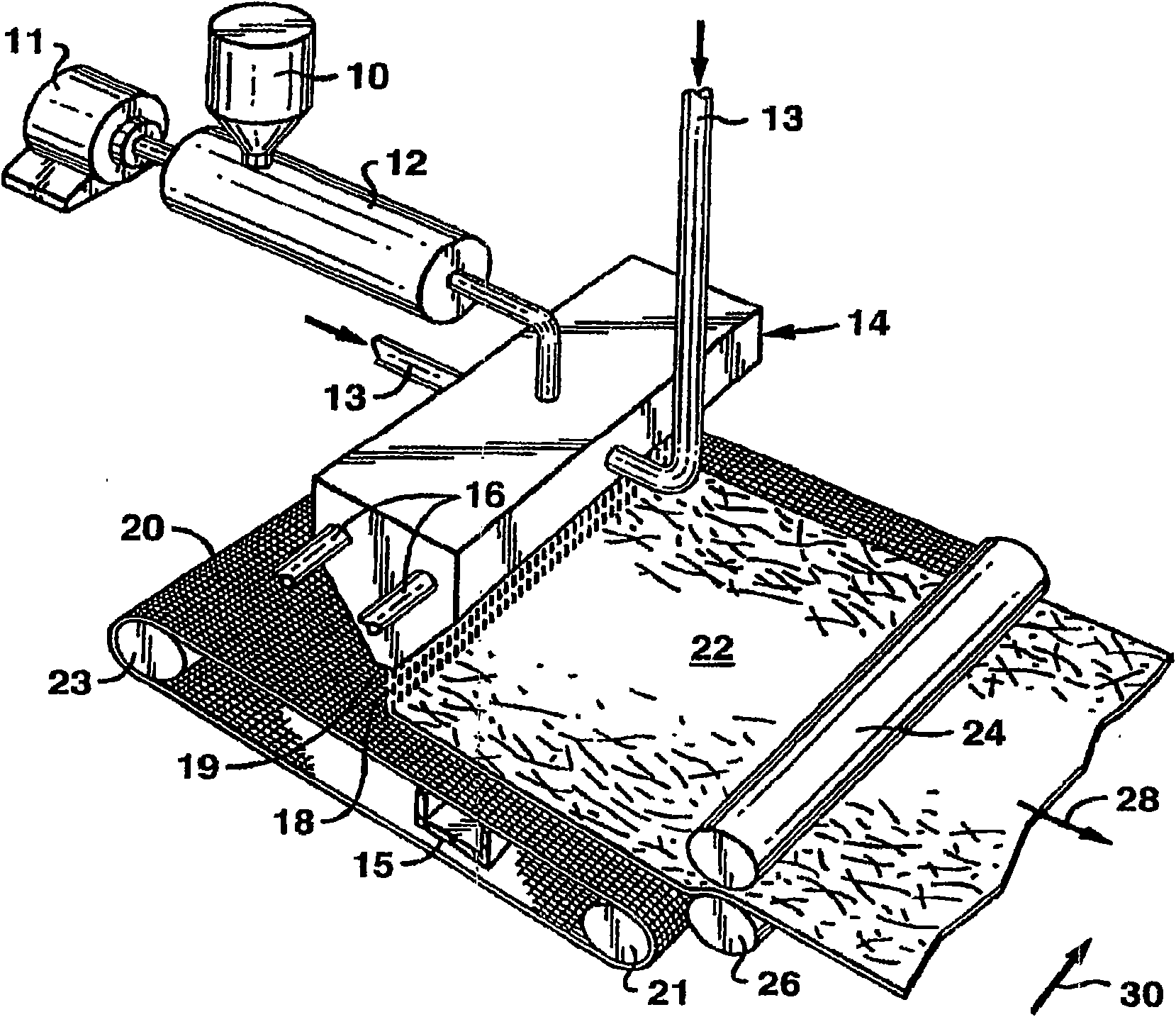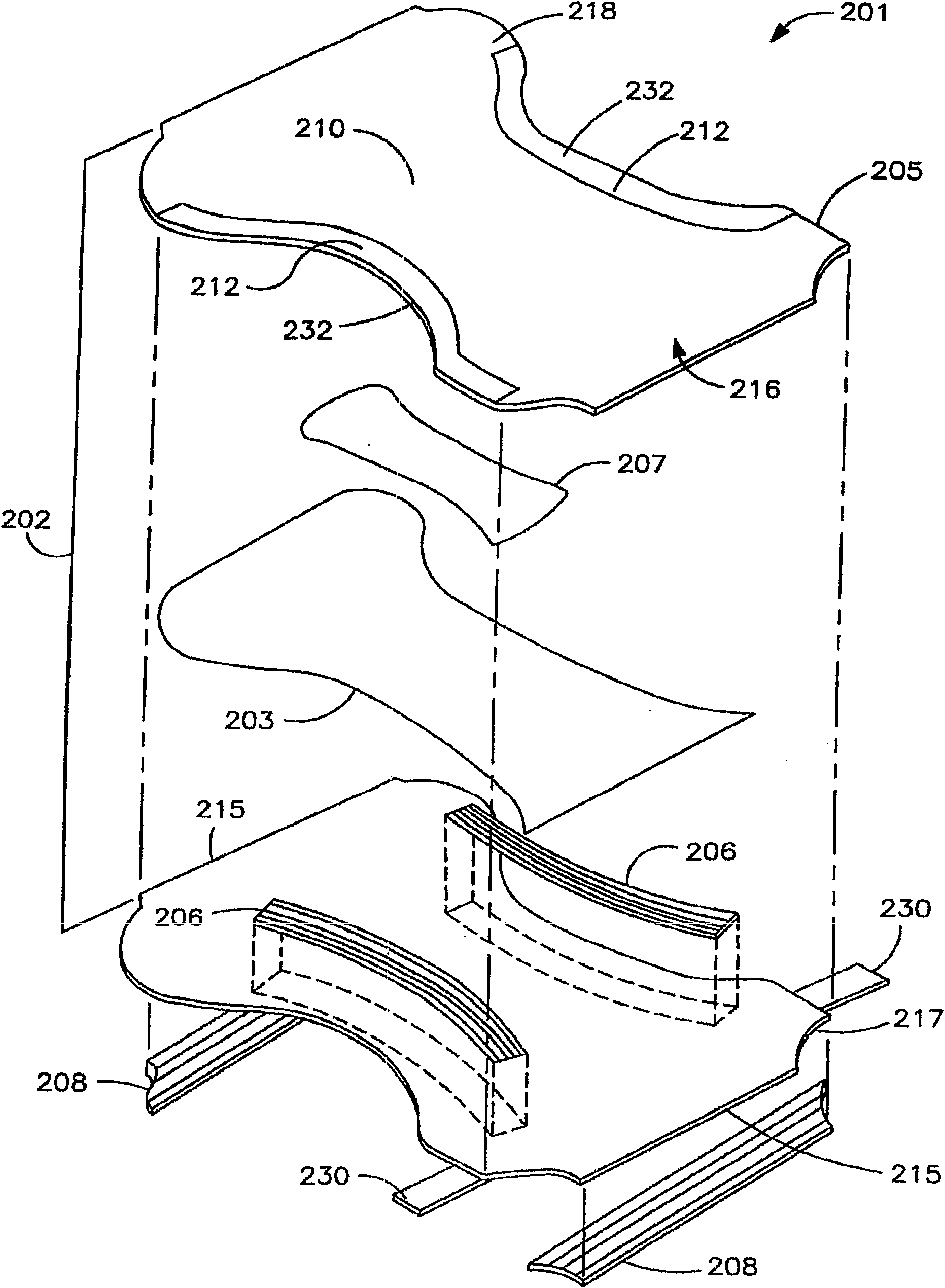Biodegradable polylactic acids for use in forming fibers
A technology of polylactic acid and degradable polymers, applied in fiber treatment, fiber chemical characteristics, conjugated synthetic polymer artificial filaments, etc., can solve problems that are not suitable for meltblown methods
- Summary
- Abstract
- Description
- Claims
- Application Information
AI Technical Summary
Problems solved by technology
Method used
Image
Examples
Embodiment 1
[0100] Two grades of polylactic acid were used, 6201D supplied by NatureWorks LLC (Minnetonka, MN) and L9000 supplied by Biomer Inc. (Germany). The resulting resin was melt-processed using a Wernerer Phleiderer ZSK-30 twin-screw extruder (L / D ratio 44) as described in Table 1 below. Three extrusion screw configurations were used during the trials, specifically low, medium and high screw shear devices. The low shear screw arrangement included a total of 33 low shear conveying elements and a total of 20 high shear kneading elements. The medium shear screw arrangement included a total of 29 low shear conveying elements and a total of 25 high shear kneading elements. The high shear screw arrangement included a total of 19 low shear conveying elements and a total of 39 high shear kneading elements. After extrusion, the modified polymer strands are cooled on a conveyor belt and pelletized. Both dry and pre-wet resins were used. Moisture content was measured prior to extrusion an...
Embodiment 2
[0114] Several particle samples of Example 1 were placed under different drying conditions to test their effects on the final melt flow rate (MFR). Test the final melt flow rate. Drying conditions and test results are described in Table 4 below:
[0115] Table 4: Properties of Dry Resin
[0116]
[0117] As shown in the table, there was a partial decrease in melt flow rate after drying.
Embodiment 3
[0119] Meltblown webs were formed from three (3) different resin samples using conventional meltblowing equipment, as described above. Sample A was formed from Sample Resin No. 38 (Example 1) and extruded as monocomponent fibers. The resin was dried overnight at 180°F before wet treatment. Sample B was also formed from the dried resin of Sample No. 38 (Example 1). Extruded Sample B, however, was a conventional sheath / core structure in which the core (80% by weight) was formed from Sample No. 38 resin and the sheath (20% by weight) was obtained from Basell North America, Inc. (Elkton, Maryland). State) named "PF015" polypropylene form. The control meltblown web was also a monocomponent fiber formed from a resin comprising PF015 polypropylene. The conditions for forming the meltblown web are reported in Table 5 below. Also, various mechanical properties of the webs are reported in Table 6 below.
[0120] Table 5: Melt blown web processing conditions
[0121]
[0122] Ta...
PUM
| Property | Measurement | Unit |
|---|---|---|
| shear viscosity | aaaaa | aaaaa |
| melting point | aaaaa | aaaaa |
| shear viscosity | aaaaa | aaaaa |
Abstract
Description
Claims
Application Information
 Login to View More
Login to View More - R&D
- Intellectual Property
- Life Sciences
- Materials
- Tech Scout
- Unparalleled Data Quality
- Higher Quality Content
- 60% Fewer Hallucinations
Browse by: Latest US Patents, China's latest patents, Technical Efficacy Thesaurus, Application Domain, Technology Topic, Popular Technical Reports.
© 2025 PatSnap. All rights reserved.Legal|Privacy policy|Modern Slavery Act Transparency Statement|Sitemap|About US| Contact US: help@patsnap.com



